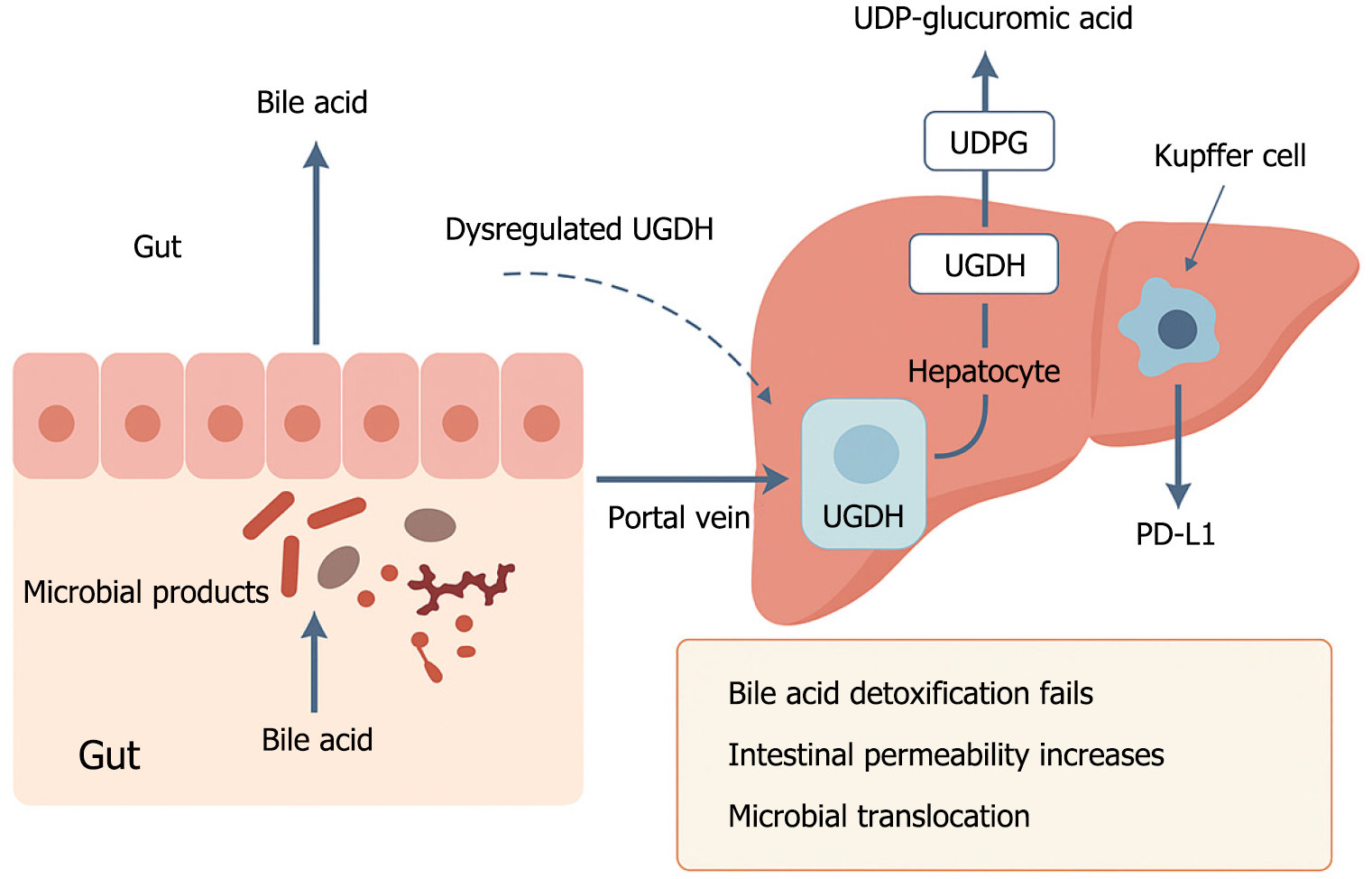Copyright
©The Author(s) 2025.
World J Gastrointest Oncol. Oct 15, 2025; 17(10): 110464
Published online Oct 15, 2025. doi: 10.4251/wjgo.v17.i10.110464
Published online Oct 15, 2025. doi: 10.4251/wjgo.v17.i10.110464
Figure 1 Schematic illustration of how dysregulated uridine diphosphate-glucose 6-dehydrogenase disrupts gut-liver immune homeostasis.
Under normal conditions, hepatic uridine diphosphate (UDP)-glucose 6-dehydrogenase (UGDH) converts UDP-glucose to UDP-glucuronic acid, which supports the glucuronidation and detoxification of bile acids and microbial metabolites. This process protects the intestinal barrier and prevents harmful microbial products from reaching the liver. However, when UGDH is downregulated or impaired, detoxification fails. Bile acids accumulate, intestinal permeability increases, and microbial products such as lipopolysaccharide translocate to the liver via the portal vein. These signals activate Kupffer cells, leading to programmed cell death ligand 1 upregulation and immune suppression, thereby promoting hepatocarcinogenesis. UDP: Uridine diphosphate; UGDH: Uridine diphosphate-glucose 6-dehydrogenase; PD-L1: Programmed cell death ligand 1.
- Citation: Yang YQ, Li N, Liu S, Yu YW. Uridine diphosphate-glucose 6-dehydrogenase-mediated glucuronidation and its emerging role in gut-liver immune regulation. World J Gastrointest Oncol 2025; 17(10): 110464
- URL: https://www.wjgnet.com/1948-5204/full/v17/i10/110464.htm
- DOI: https://dx.doi.org/10.4251/wjgo.v17.i10.110464













